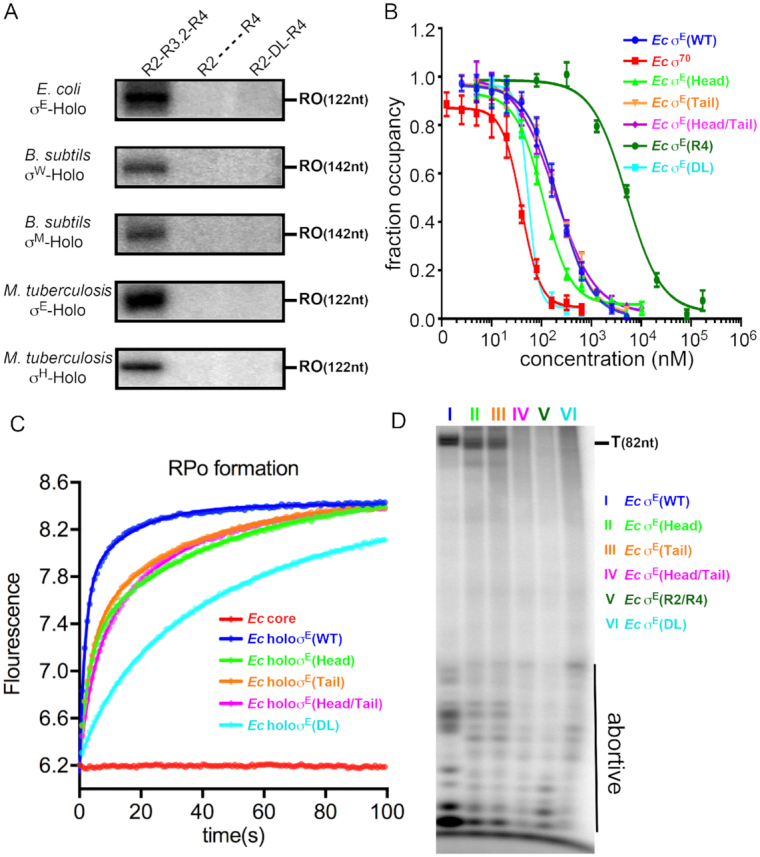Figure 5.

The σ3.2-like linker plays essential roles in multiple steps of transcription initiation. (A) The in vitro transcription assay showing the transcription activity of WT and derivatives of various bacterial ECF σ factors. RO represents the run-off transcripts. (B) The FP competitive assay showing binding affinities of WT and derivatives of Escherichia coli σE to bacterial RNAP core enzyme. The experiments were repeated in triplicate, and the data are presented as mean ± S.E.M. (C) The stopped-flow experiments measuring the kinetics of promoter unwinding by WT or derivatives of E. coli σE. The data points were recorded every 0.1 s and the data were fitted as described in ‘Materials and Methods’ section. The Ec σE head region (residues 88–98) was replaced by ‘GGSSGSGGSSS’ resulting in Ec σE (head); the σE3.2 tail region (residues 119–130) was replaced by ‘GGSSGSGGGSSS’ resulting in Ec σE (tail); E σE3.2 head region (residues 88–98) and tail region (residues 119–130) were replaced by ‘GGSSGSGGSSS’ and ‘GGSSGSGGGSSS’, respectively resulting in Ec σE (head/tail). (D) The in vitro transcription assay with WT or derivatives of E. coli σE. The ‘abortive’ represents abortive transcripts and the ‘T’ represents terminated transcripts of 82 nt. The in vitro transcription and stopped-flow experiments were repeated for three times and representative data are shown. The FP competitive experiments were repeated for three times and the data were presented as mean ± S.E.M.
